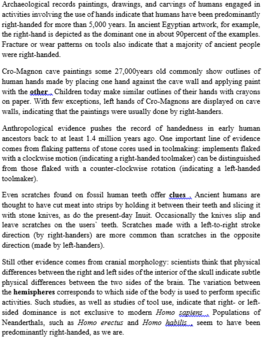Read the following passage and mark the letter A, B, C, or D on your answer sheet to indicate the correct answer to each of the questions from 27 to 36.
Federal Express is a company that specializes in rapid overnight delivery of high-priority packages. The first company of its type, Federal Express was founded by the youthful Fred Smith in 1971, when he was only 28 years old. Smith had actually developed the idea for the rapid delivery service in a term paper for an economics class when he was a student at Yale University. The term paper reputedly received a less-than-stellar grade because of the infeasibility of the project that Smith had outlined. The model that Smith proposed had never been tried; it was a model that was efficient to operate but at the same time was very difficult to institute.
Smith achieved efficiency in his model by designing a system that was separate from the passenger system and could, therefore, focus on how to deliver packages most efficiently. His strategy was to own his own planes so that he could create his own schedules and to ship all packages through the hub city of Memphis, a set-up which resembles the spokes on the wheel of a bicycle. With this combination of his own planes and hub set-up, he could get packages anywhere in the United States overnight.
What made Smith's idea difficult to institute was the fact that the entire system had to be created before the company could begin operations. He needed a fleet of aircraft to collect packages from airports every night and deliver them to Memphis, where they were immediately sorted and flown out to their new destinations; he needed a fleet of trucks to deliver packages to and from the various airports; he needed facilities and trained staff all in place to handle the operation. Smith had a $4 million inheritance from his father, and he managed to raise an additional $91 million dollars from venture capitalists to get the company operating.
When Federal Express began service in 1973 in 25 cities, the company was not an immediate success, but success did come within a relatively short period of time. The company lost $29 million in the first 26 months of operations. However, the tide was to turn relatively quickly. By late 1976, Federal Express was carrying an average of 19.000 packages per night and had made a profit of $3,6.
How long did it take Federal Express to become profitable?
A. One year
B. Three years
C. Six years
D. Two months






Đáp án là B. three years (1973 - 1976)